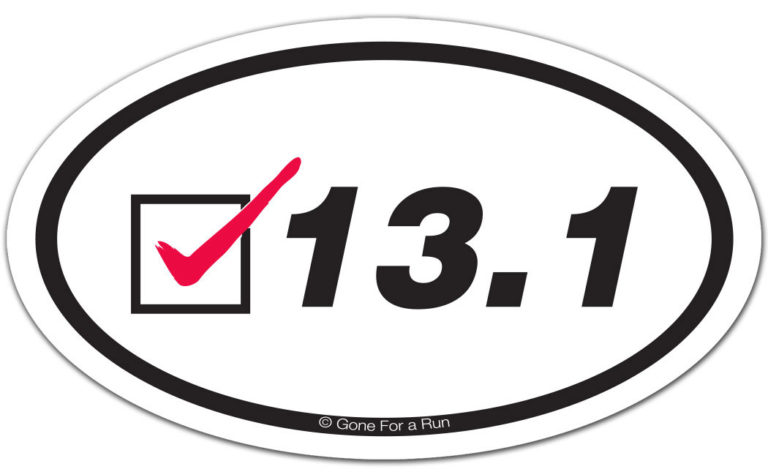Last updated on February 8th, 2023
So you’ve decided to run a half marathon. Good for you! The key to finishing a race of any distance, but particularly the longer distances, is being prepared. How do you prepare? By gradually getting your body (and mind) ready for the 13.1-mile race. This involves slowly increasing your mileage and planning rest days, too.
This half marathon training schedule is designed for beginners who haven’t run 13.1 miles before. The 18 weeks gives you ample time to ramp up your mileage and get used to running several times a week at specific, pre-determined distances.
The key to having a good race is good training. Skipping a few days here or there is bound to happen, but don’t skip too many runs or cut your miles short because you WILL feel it on race day!
Rest days are just as important as the days you run. You may feel good on rest days and may be tempted to run, but give yourself that time. Rest days allow your body to recover and help you avoid injuries.
Before you start any training program, it’s always a good idea to consult your physician.
Half Marathon Training Plan Overview
If you’re new to training for endurance races, here are a few concepts to know. Different types of runs will make up your weekly training schedule.
Easy Pace – If you can run and hold a conversation at the same time, you are running at an easy pace. Easy pace running doesn’t necessarily mean it’s easy. It’s the pace you can sustain the longest distance.
Coaches and exercise physiologists believe that 70 to 90 percent of your weekly miles should be easy pace miles.
Cross Training – Cross training is just about any exercise other than running. Swimming, cycling, walking, yoga, Pilates, elliptical training, and rowing are all examples of cross training activities that enhance your running if done a few times a week regardless of your fitness level.
The main idea behind cross training is to balance muscle groups you don’t use as much while you’re running. Cross training also helps mix up your routine and may enhance your overall cardiovascular fitness.
Tempo Run – Also called a threshold run, this type of run pushes your body’s comfort level a bit and helps you build your anaerobic threshold, which is where your body starts to use more glycogen for energy. The higher your anaerobic threshold, the better you’ll perform during your half marathon.
Tempo runs are faster than normal, but the intervals are shorter. An example may be running 1 mile at a steady tempo pace, recovering for two minutes with a slow recovery jog and then running another mile at tempo.
You don’t need to do tempo runs more than once per week. They should only constitute 10 to 15 percent of your weekly miles.
Weekly Training Schedule Overview
Mondays – Mondays are for resting. That means no exercising. Rest days are important for your body to recover and help prevent injuries.
Tuesdays and Thursdays – Use these days to run at a moderate pace. Moderate pace here means slightly faster than your easy pace. Feel free to experiment with speed a bit on these days. Try running a mile at a face pace, walk for a mile and finish at a moderate pace for example.
Fridays – Fridays are designated as rest days and are designed to help you feel fresh, rested and ready for your long run on Saturday. Cross training on Fridays is ok too, but save your best for your upcoming long run.
Saturdays – Long run days are the culmination of your weekday workouts where you get the chance to push the miles and build endurance and technique for reaching your half marathon goal. This is the day to work on maintaining your race pace throughout your run. It’s a good idea to put yourself in the race day mindset of monitoring your pace and running form as well as checking in on your body to see how you’re feeling as you build up miles.
Take mental notes on how you were feeling at different points during your long run and write them down (make notes right on your training plan) when finished. This gives you a chance to improve on your weak points during the next long run.
Make a conscious effort to drink plenty of water in the 24 hours prior to your long runs. Don’t “carbo load” the night before or eat more than you normally would or you might feel sluggish and have tummy trouble midway through.
Sundays – This is your active recovery day following your long run. Walk or run at your slowest, relaxed pace. The key is to move and not let your muscles tighten up. Do some light stretches in the morning and evening to stay loose. After your longest run of the week you may feel tempted to rest all day but active recovery gets blood flowing to your muscles that helps them recover and get stronger.




